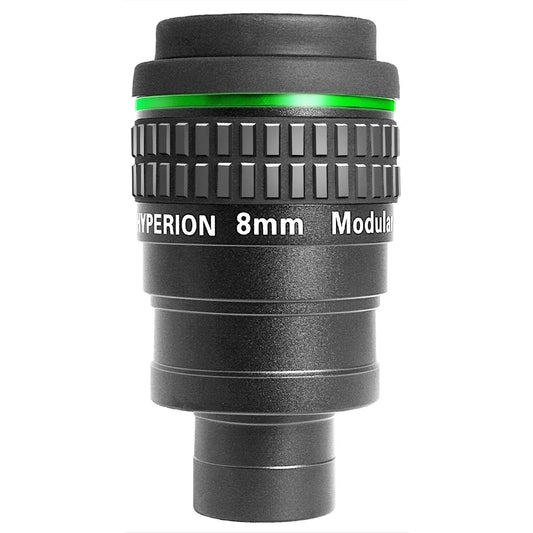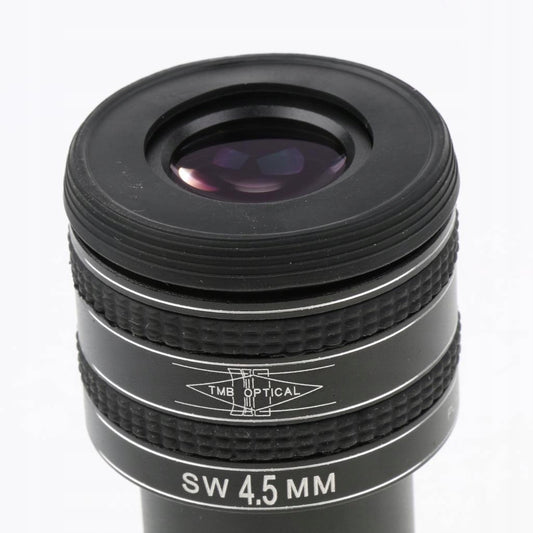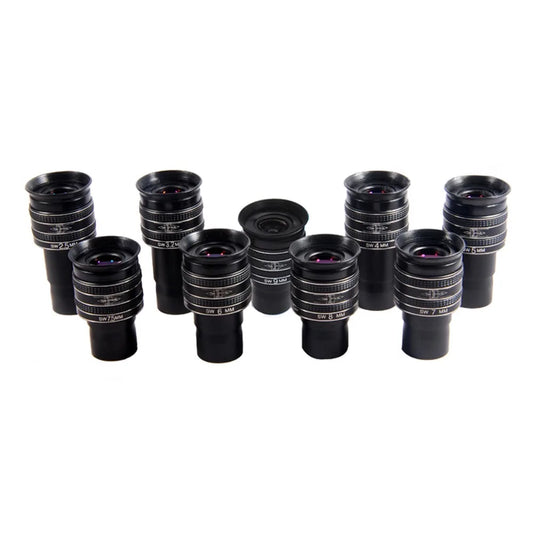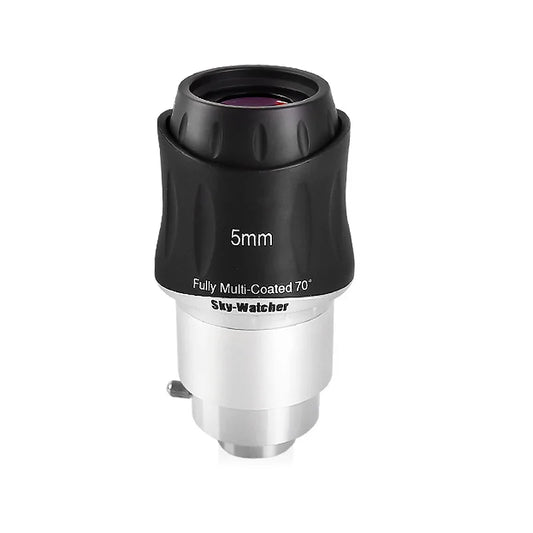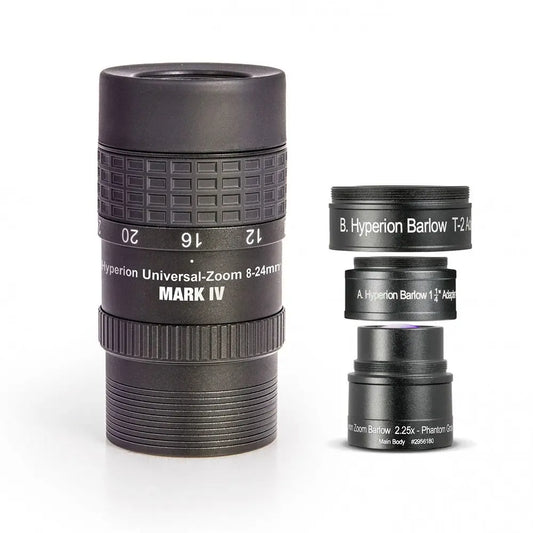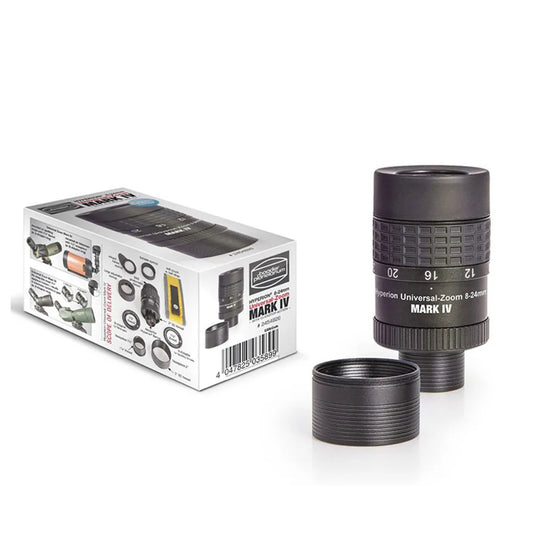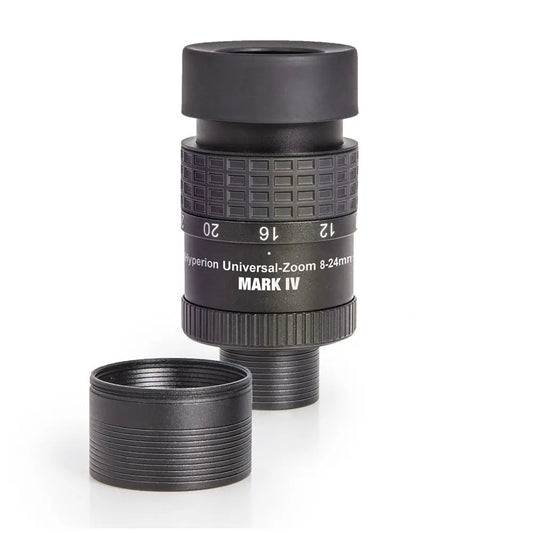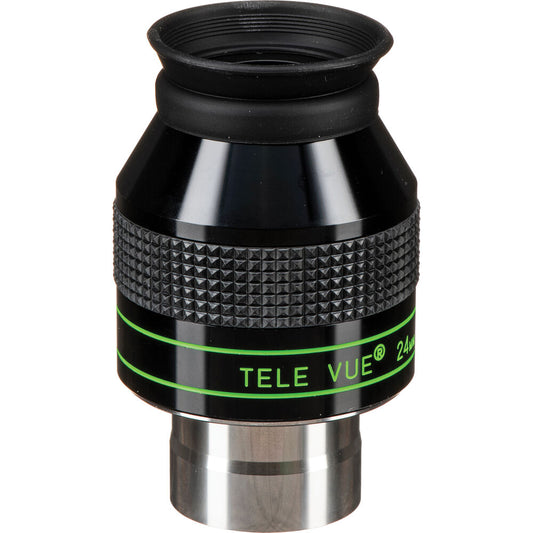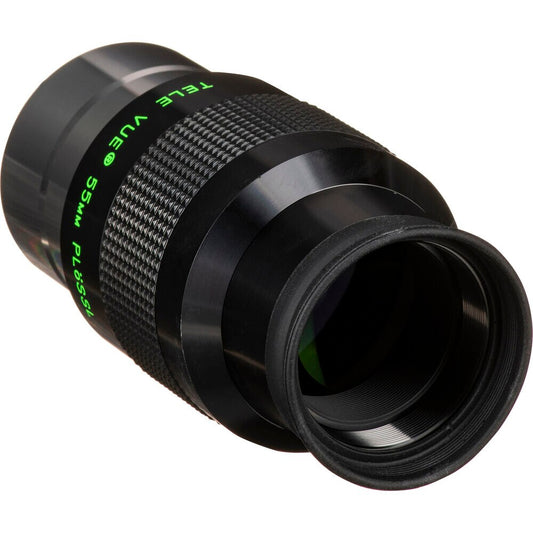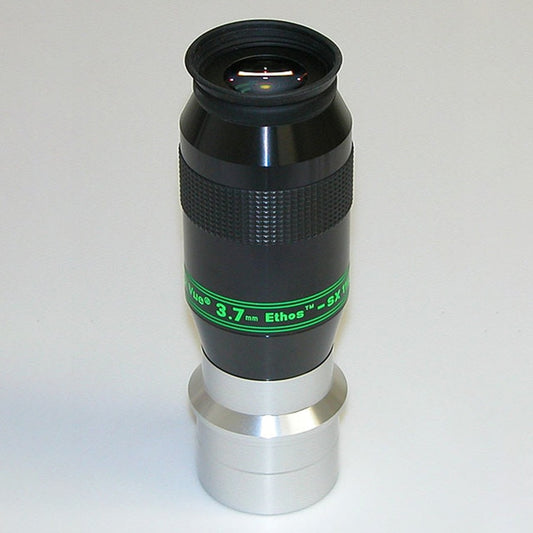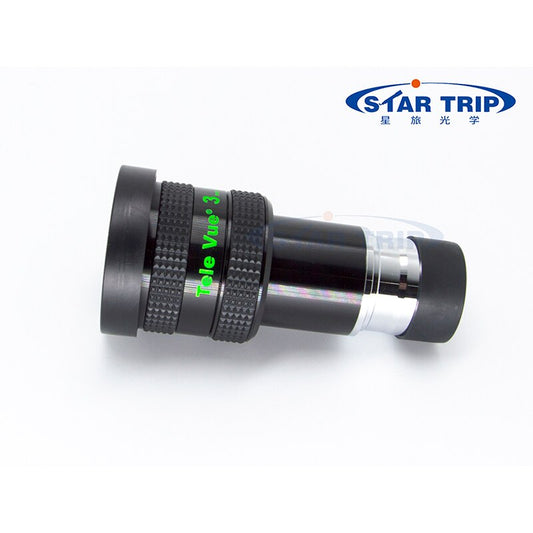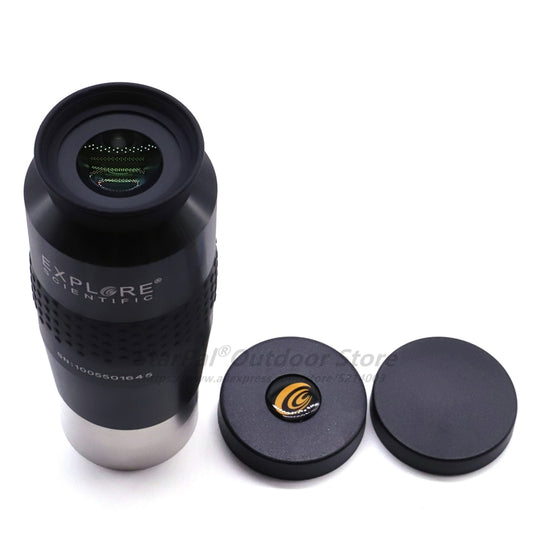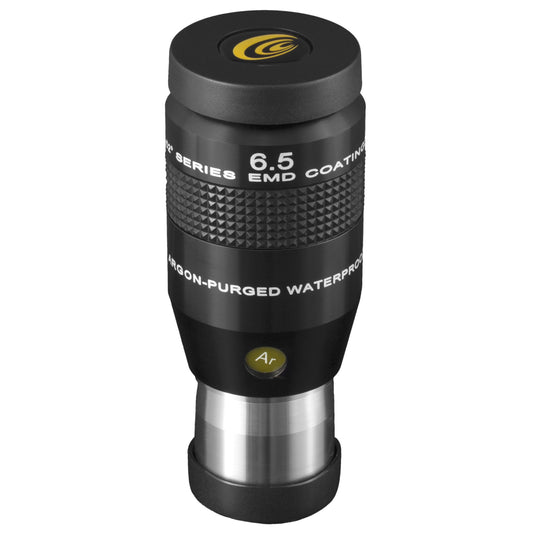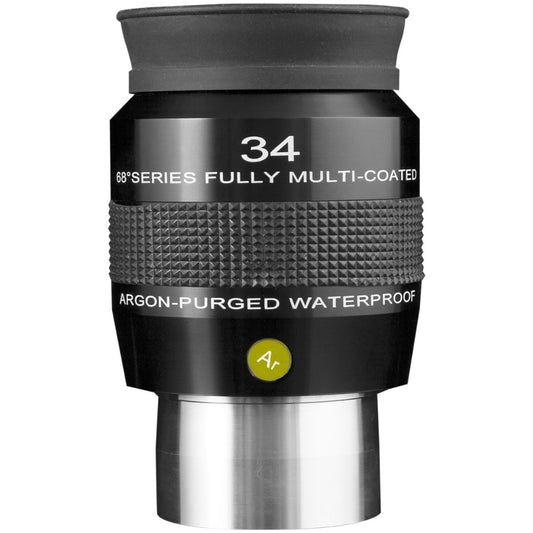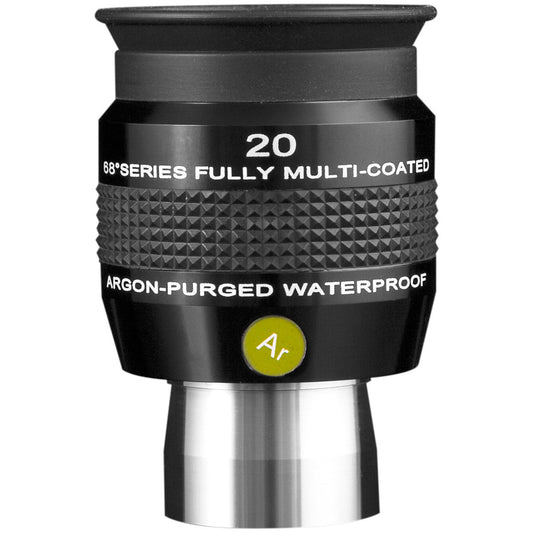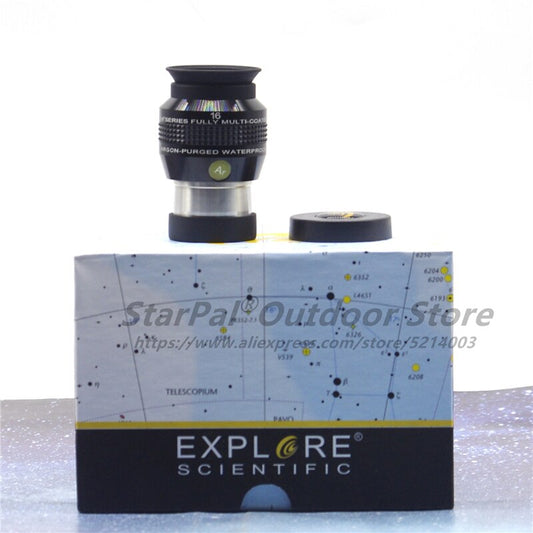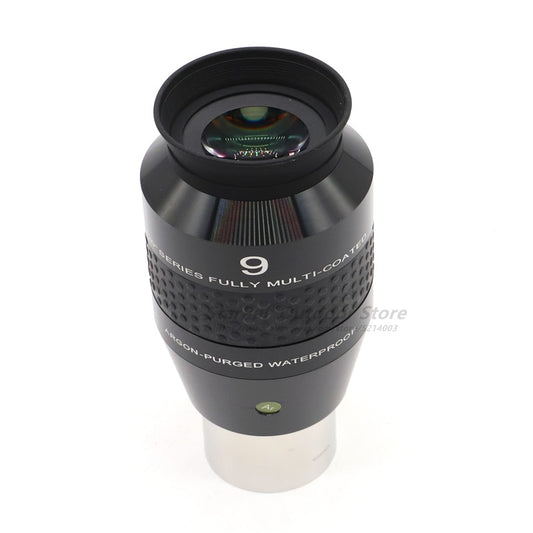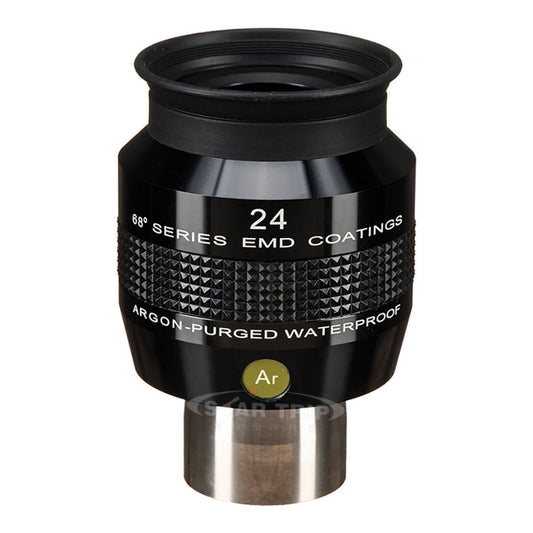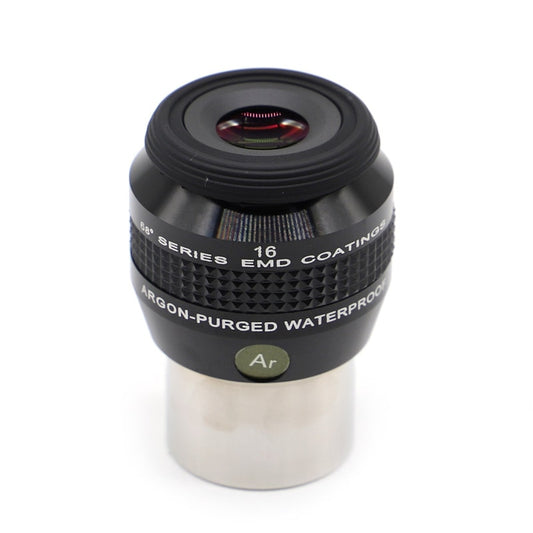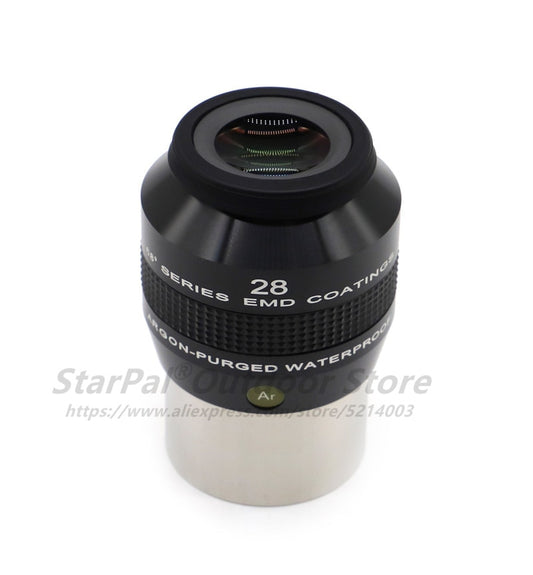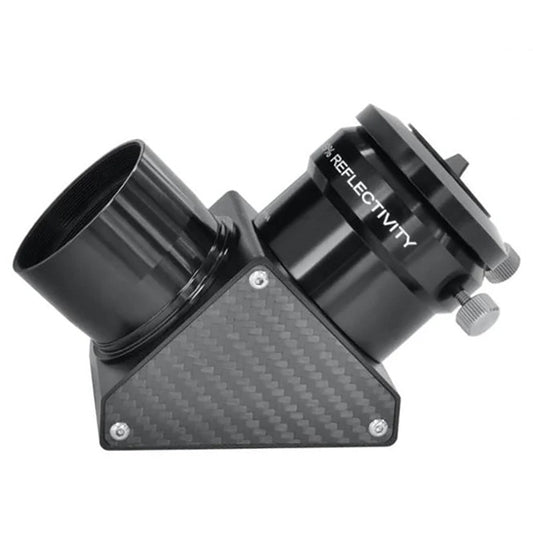The key to a captivating planetary observation lies in achieving the perfect magnification. According to seasoned astrophotographers, planetary magnification typically starts at 120x, extending as high as the telescope or atmospheric conditions permit. For a 6" scope, this translates to a range of 120x to about 250x. However, achieving this optimal range involves selecting the right eyepiece focal lengths based on your telescope's specifications.
Assuming a 1200mm focal length scope, eyepiece focal lengths ranging from 10mm (120x) to 5mm (240x) are recommended. The Celestron X-Cel LX line offers an affordable and mid-range set of eyepieces, including focal lengths of 9mm (133x), 7mm (171x), and 5mm (240x). These options provide flexibility for conservative, medium-power, and high-power planetary viewing, depending on atmospheric conditions.
Navigating Eyepiece Choices
When it comes to eyepiece choices, the Agena StarGuider/Astro-Tech Paradigm 5mm and the Celestron X-Cel LX 5mm are highly regarded for planetary viewing at 130x with a 1mm exit pupil. For higher magnification, the 3.2mm Paradigm/StarGuider is recommended, provided the atmospheric conditions allow.
The rule of thumb for planetary magnification suggests a range of 20 to 50 power per inch, with 20x/inch being the most common choice and 50x/inch reserved for exceptional seeing nights. However, the "new astronomer's tales" remind us that these rules are not universal, as historical observations often exceeded these modern limits.
Unveiling Planetary Detail
To truly appreciate the nuances of planetary detail, understanding contrast and fine detail thresholds is crucial. The Optimum Magnified Visual Angle (OMVA) becomes paramount, with figures indicating that planetary brightness OMVA is around 10 arc-minutes. This corresponds to magnifications of about 1000x or 125x per inch of objective for an 8-inch telescope.
While general rules suggest 20 to 30x per inch for a comfortable planetary view, pushing limits and exploring magnifications from 10 to 100+ times per inch of objective is recommended for those seeking to unveil all possible planetary details.
Selecting Eyepieces Based on Telescope Specifications
The telescope's focal length plays a pivotal role in determining the appropriate eyepiece focal lengths. For an 8" telescope with a 2000mm focal length, eyepieces in the 15-16mm range to 6.5-7mm are suggested. In contrast, an 8" AVX with a 1000mm focal length calls for eyepieces ranging from 7-8mm to 3-4mm.
Considerations for magnification include starting with a 16mm eyepiece for an SCT or an 8mm eyepiece for an AVX, gradually exploring higher magnifications based on atmospheric conditions.
Exploring Eyepiece Options
For those with a penchant for premium eyepieces, the TeleVue Delite, TeleVue Delos, or Takahashi Abbe Orthoscopics are touted as the best on the market. Meade HD-60 series and BST "Planetary" eyepieces offer more budget-friendly alternatives, providing commendable performance.
Zoom eyepieces, such as the Tele Vue Ethos or a budget-friendly 6mm 66⁰ eyepiece, are recommended for versatile planetary viewing. Binoviewers present another intriguing option, enhancing the visual experience by leveraging both eyes.
Real-World Recommendations
Drawing from the experiences of seasoned astronomers, it's evident that trial and error play a significant role in finding the ideal eyepiece. Recommendations based on personal experiences underscore the importance of practical experimentation.
Eyepiece Recommendations for Your 8" Celestron
Understanding the specifics of your 8" Celestron telescope is essential for making informed eyepiece choices. If your telescope is an SCT with a 2000mm focal length, consider starting with a 16mm eyepiece to achieve conservative magnification. For the 8" AVX with a 1000mm focal length, an 8mm eyepiece is recommended as a starting point. These choices provide a balance between clarity and magnification, ensuring a rewarding planetary viewing experience.
Budget-Friendly Alternatives: Gold Line Eyepieces
For amateur astronomers seeking an affordable yet impactful upgrade, the gold line eyepieces, often branded as Svbony, offer a cost-effective solution. A 6mm Svbony eyepiece can provide a significant zoom for your telescope at an attractive price point, typically around $30. These eyepieces strike a balance between performance and budget, making them an excellent choice for those venturing into planetary observation for the first time.
Zoom Eyepieces: Versatility at Your Fingertips
Zoom eyepieces present a versatile option for adapting to varying atmospheric conditions and celestial targets. The Tele Vue Ethos Zoom, for example, offers a range of focal lengths in a single eyepiece, allowing you to smoothly transition between magnifications without changing eyepieces. Combining a zoom eyepiece with a matching Barlow lens, especially during clear nights, can unlock new levels of detail in planetary features.
Exploring Premium Options: TeleVue Delite, Delos, and More
For those with a more discerning taste and a willingness to invest in top-tier eyepieces, the TeleVue Delite and Delos series, along with Takahashi Abbe Orthoscopics, stand out as exemplary choices. While these options come with a higher price tag, they offer unparalleled optical quality and are designed to provide an immersive planetary viewing experience.
The Art of Binoviewing: Seeing with Both Eyes
Binoviewers, which utilize both eyes for observation, represent a unique approach to planetary viewing. While the initial investment can range from $150 to $1500, the benefits in terms of enhanced contrast sensitivity and overall visual experience can be significant. Patience is key when mastering the art of binoviewing, especially when it comes to achieving precise focus, but the rewards can be well worth the effort.
Fine-Tuning Your Magnification: Planetary Observing Techniques
Achieving the perfect magnification for planetary observation involves more than just selecting the right eyepiece. Seasoned observers recommend considering factors such as atmospheric seeing conditions and the planet's position in the sky. If the atmosphere is turbulent, opting for a lower power eyepiece may yield better results, providing a clearer and more satisfying view.
Atmospheric Dynamics: Fine-Tuning Your Planetary Observations
The success of your planetary viewing escapade isn't solely dependent on the eyepiece; it's also intricately linked to atmospheric conditions. The turbulence and steadiness of the atmosphere play a pivotal role in determining the optimal magnification for observing Saturn's intricate features. On nights when the air is calm and steady, you might have the opportunity to push the magnification to greater heights, revealing more delicate details. However, when the atmosphere is turbulent, it's advisable to stick to lower power eyepieces for a clearer, more enjoyable experience.
A Closer Look at Exit Pupils and Focal Ratios
Understanding the relationship between eyepiece exit pupils and telescope focal ratios is essential for refining your planetary observations. The general guideline suggests a recommended range of 1mm to 7mm for eyepiece exit pupils, with the highest power not going below 1mm and the lowest not exceeding the maximum size of your eye's pupil (around 7mm). For instance, a 6-inch f/8 telescope translates to an eyepiece focal range around 8mm to 56mm for planetary viewing, with a sweet spot of 2mm exit pupil offering the most comfortable viewing experience.
Unleashing the Power of Contrast: Diving into Visual Detection Thresholds
Beyond magnification and exit pupils, delving into the intricacies of contrast is paramount for unraveling planetary details. Figures illustrating visual detection thresholds showcase the critical visual angle (CVA) at approximately 0.7 arc-minutes, corresponding to around 70 power (approximately 9x per inch of objective) for an 8-inch telescope. However, the story doesn't end there; the Optimum Magnified Visual Angle (OMVA) reveals that contrasts as low as 1% can be detected at higher magnifications, emphasizing the importance of exploring various magnification levels to unveil all possible planetary intricacies.
Personalizing Your Experience: Trial, Error, and Personal Recommendations
While formulas and guidelines exist to calculate magnification, there's a unique element to personal experience and preference. Astronomers often rely on trial and error to find the sweet spot for their planetary observations. Recommendations based on individual experiences offer valuable insights, guiding newcomers through the intricacies of eyepiece selection. Whether it's the reliability of gold line eyepieces, the flexibility of zoom options, or the premium quality of TeleVue series, personal anecdotes underscore the diversity in preferences within the astronomy community.
Adapting to Telescope Specifications: Tailoring Eyepiece Choices
A crucial aspect of selecting the right eyepiece involves adapting to the specifications of your telescope. Considering the focal length of your telescope is essential, as it directly influences the optimal eyepiece focal lengths. Whether you own an 8-inch SCT or an 8-inch AVX, tailoring your eyepiece choices to match your telescope's characteristics ensures a harmonious synergy between optics and observation.
Fine-Tuning Your Telescope: A Precise Approach to Magnification
Your journey through the cosmos is incomplete without mastering the intricacies of your telescope. If you find yourself craving higher magnification, consider incorporating a 2x Barlow lens into your arsenal. This accessory, when paired with a 5mm eyepiece, can unlock the mysteries of Saturn's rings and the atmospheric bands of Jupiter. Striking the right balance is essential; you want high magnification without venturing into realms that might compromise the clarity of your celestial targets.
Navigating the Vast Eyepiece Landscape: Gold Line Gems and Budget-Friendly Wonders
For those venturing into planetary observation on a budget, the gold line eyepieces, often marketed under various brands, present a compelling option. Priced around $30, these eyepieces offer substantial zoom capabilities, making them an excellent starting point for amateur astronomers. The 6mm variant, in particular, can provide a significant upgrade, revealing finer details on Saturn's mesmerizing surface.
Zooming In on Versatility: The Allure of Zoom Eyepieces
Zoom eyepieces, like the Tele Vue Ethos Zoom, open up a world of possibilities for the avid planetary observer. Offering a range of focal lengths within a single eyepiece, zooms enable seamless transitions between magnifications without the hassle of swapping eyepieces. The flexibility they provide is particularly beneficial when navigating through varying atmospheric conditions or transitioning between different celestial objects in the night sky.
The Pinnacle of Performance: Premium Choices for Discerning Observers
If your pursuit of planetary perfection demands the utmost in optical excellence, the Tele Vue Delite, Delos, or Takahashi Abbe Orthoscopics stand as paragons of eyepiece craftsmanship. While these options come with a heftier price tag, they deliver unparalleled clarity and sharpness, transforming your Saturnian observations into a visual masterpiece.
Binoviewing: Seeing the Cosmos Through Dual Eyes
For a truly immersive planetary experience, consider delving into the world of binoviewers. Utilizing both eyes for observation enhances contrast sensitivity and depth perception, providing a more three-dimensional view of Saturn and other celestial wonders. While the initial learning curve may be steep, the rewards of binoviewing, especially during nights of steady seeing, can be extraordinary.
Crafting Your Planetary Arsenal: A Personalized Approach
In the realm of planetary observation, one size does not fit all. Your ideal eyepiece arsenal is a reflection of your telescope, the prevailing atmospheric conditions, and, perhaps most importantly, your personal preferences. Whether you opt for budget-friendly options, versatile zooms, or premium choices, the key is to tailor your selection to suit the unique dynamics of your celestial journey.
| Eyepiece Model |
Focal Length (mm) |
Magnification Range |
Best Conditions |
Recommendations |
| Celestron X-Cel LX 9mm |
9 |
133x |
Conservative |
Good for steady viewing, conservative magnification |
| Celestron X-Cel LX 7mm |
7 |
171x |
Moderate |
Medium power for reasonably steady atmosphere |
| Celestron X-Cel LX 5mm |
5 |
240x |
Very Steady |
High power for very steady conditions |
| Agena StarGuider 5mm |
5 |
240x |
Ideal |
Excellent choice for high power, clear atmosphere |
| Tele Vue Ethos Zoom |
Variable |
Variable |
Versatile |
Seamless transitions between magnifications |
| Tele Vue Delite series |
Various |
Various |
Premium |
Unparalleled clarity and sharpness |
| Gold Line 6mm |
6 |
Varied |
Budget-Friendly |
Great entry-level eyepiece with good zoom capabilities |
| Tele Vue Binoviewer |
N/A |
N/A |
Steady Seeing |
Enhanced contrast sensitivity using both eyes |
| Meade HD-60 series |
Various |
Various |
Mid-Range |
Good balance between cost and performance |
| Svbony 6mm 66⁰ Eyepiece |
6 |
Varied |
Budget-Friendly |
Decent zoom capabilities at an affordable price |
In the quest for the best eyepiece for viewing Saturn, the journey is as crucial as the destination. Armed with insights from astrophotography forums and the collective wisdom of seasoned observers, you're poised to elevate your planetary viewing experience. Whether opting for budget-friendly options or investing in premium eyepieces, the key is to embrace the diversity of magnifications, aligning them with atmospheric conditions for a truly celestial adventure. So, gear up, set your sights on Saturn, and let the cosmos unfold before your eyes.

